Americans don’t need a passport for a taste of Europe — because peppered across the U.S. are remarkable towns that look like they’ve been parachuted in from across the Atlantic.
These are seven of the most eye-catching examples: places that whisk visitors to the European continent without the hassle and expense of a long-haul flight.
Some towns look like storybook Bavarian villages, complete with chalet-style façades; there’s a Californian resort town crowned with Danish windmills; a city that transports visitors back to the Spain of yesteryear; and America’s “Little Switzerland”, where yodeling echoes around the streets and the air is ripe with the pungent aromas of powerful cheeses.
What many of these places have in common is resilience in the face of adversity and enterprising spirits, their European looks not just sentimental indulgence, but the result of efforts to turn fortunes around and draw visitors in.
1. Carmel-by-the-Sea, California — looks like England
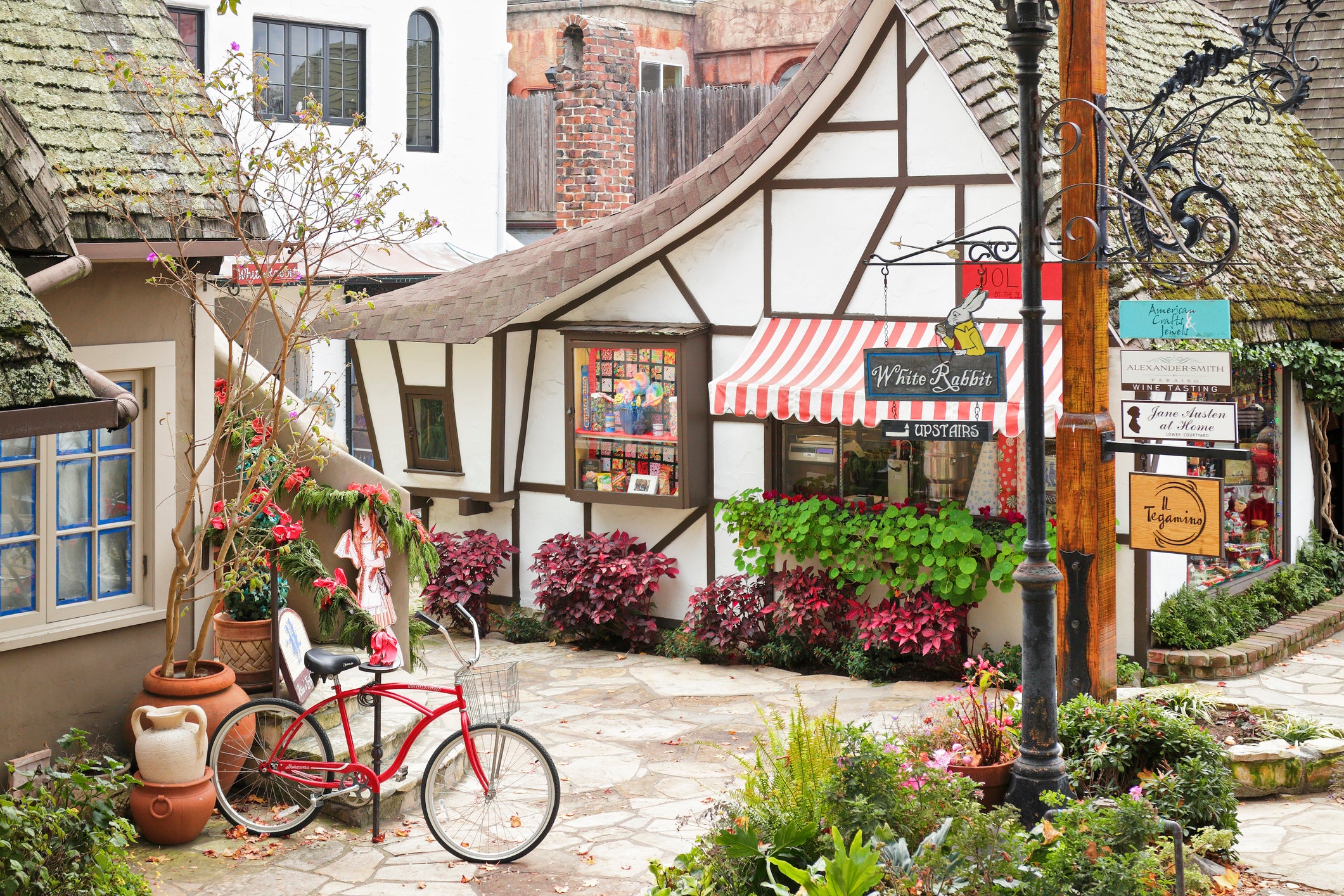
Step into Carmel-by-the-Sea and you might be forgiven for thinking you’ve gone back in time to medieval England.
But this small Californian coastal town is very much in the here and now — a real-life place that happens to resemble a chocolate box English village.
The town’s whimsical looks are thanks to amateur builder Hugh Comstock, from Evanston, Illinois, who in the 1920s began building fairy-tale cottages in Carmel that remain to this day.
He deliberately avoided using a carpenter’s level to ensure the buildings were charmingly crooked.
He built a total of around 21, and inspired other builders and designers to create more cottages in the same storybook style.
Now there are hundreds of mesmerizingly wonky dwellings in the town, with maps available that direct visitors to some of the best examples.
Where to stay
Villa Mara Carmel is just a short walk from the beach, features a lush garden, and its air-conditioned bedrooms come with bathrobes and minibars.
Read more: 72-hour escapes to Europe: Six itineraries to see the best sights
2. Solvang, California — looks like Denmark
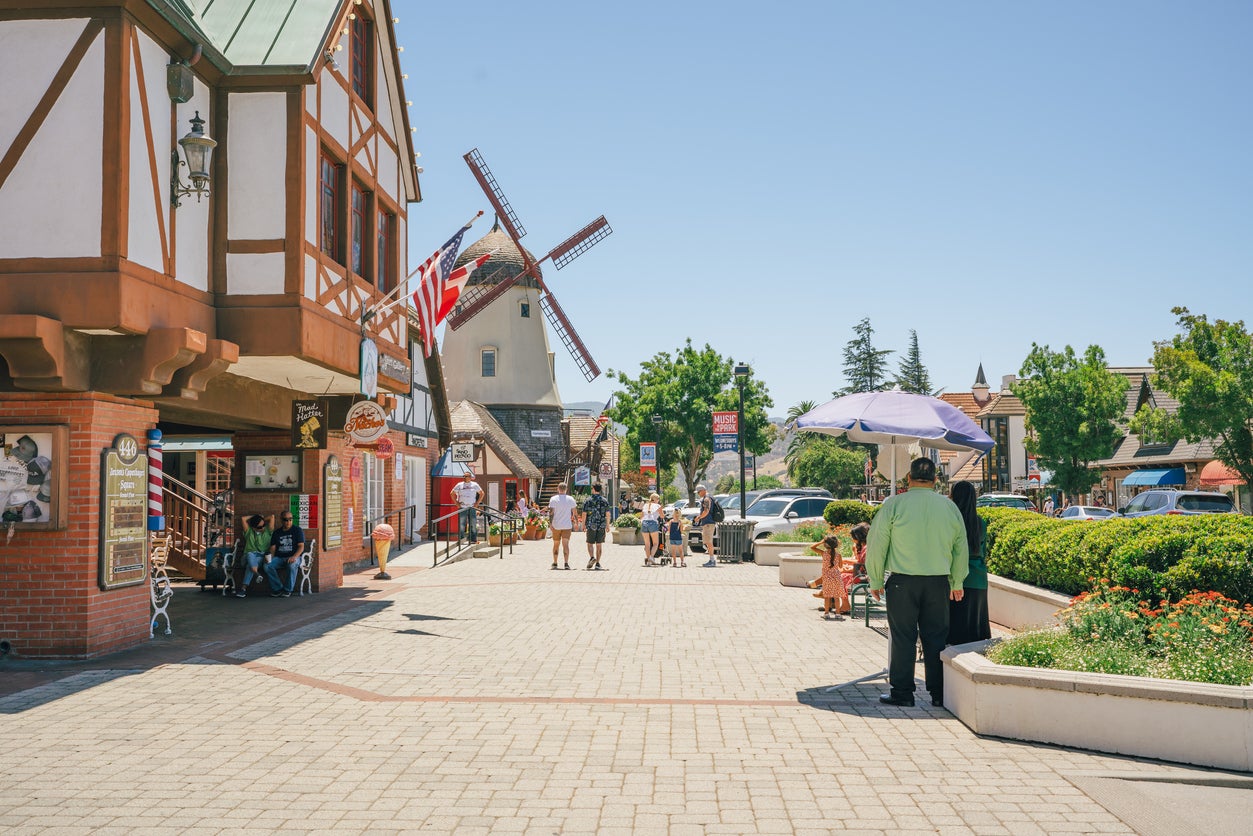
Solvang is the “Danish Capital of America” — and it certainly looks the part.
Explore and you’ll discover half-timbered facades, gabled roofs, windmills, Danish bakeries, and replicas that further strengthen the link to the motherland — including versions of Copenhagen’s Rundetarn (Round Tower) and the Little Mermaid statue.
However, back in the early 20th century, Solvang bore a resemblance to a typical dusty pioneer town.
The transformation occurred after the Danish-American founders, who established the town in 1911, decided to capitalize on a tourism boom sparked by a 1947 newspaper article that highlighted their Danish cultural celebrations.
Local leaders adopted a completist stance and decided to make Solvang look cohesively Danish, too.
Existing buildings were renovated, and all new structures were required to embrace Danish architectural styles.
Where to stay
The Landsby is located in the heart of Solvang and offers rooms with an inviting Scandinavian feel.c
Read more: These hotels have very specific concierge services, from sandcastle building to a ‘bourbon butler’
3. New Glarus, Wisconsin — looks like Switzerland
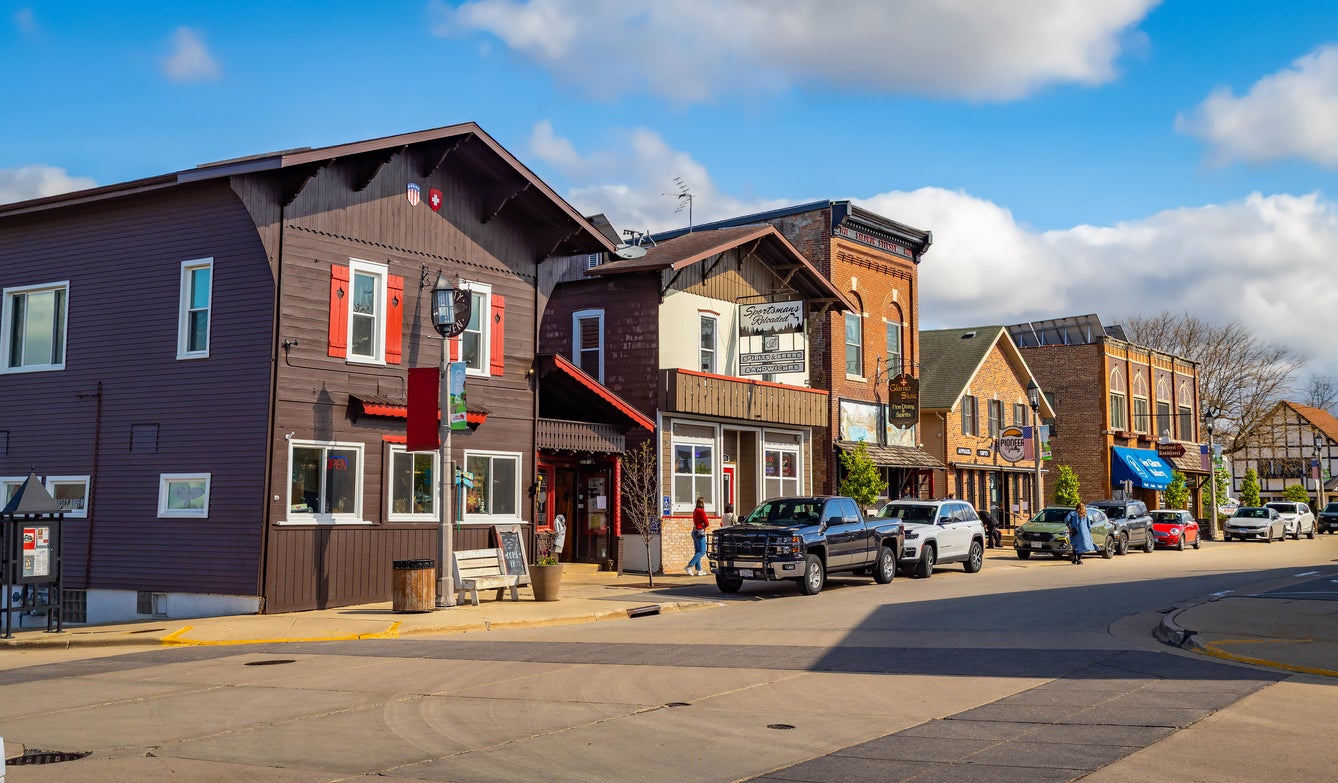
New Glarus isn’t just a Swiss-style town — it’s an entire “Swisscape”, set amid rolling hills dotted with farms and woodland pastures reminiscent of the original Glarus in Switzerland.
The town was settled by 108 Swiss pioneers in 1845, who left the canton (state) of Glarus behind for a better life when hard times hit.
They chose this idyllic spot in Green County, Wisconsin, because it reminded them of their verdant home.
The architecture remained simple and rustic until the 1960s, when a decision was made to use the town’s authentic Swiss heritage to supercharge tourism.
The Swiss-German language, folk traditions such as yodeling and alphorn playing, and Swiss cuisine had already been safeguarded.
But as part of “Project Edelweiss”, buildings were given a Swiss chalet-style makeover — and an iconic new look was born.
Today, visitors can explore the Swiss Historical Village & Museum, featuring authentic and replica 19th-century buildings, including a settler’s cabin and cheese factory, and step inside the Chalet of the Golden Fleece Museum — the charming, Swiss Alps-style home of former wealthy resident Edwin Barlow.
Inside are thousands of artifacts he collected during his travels abroad in the early to mid-20th century.
Cheese is also a major draw, with the town’s Cheese Haus shop stocked with a wide array of Swiss and Wisconsin-made cheeses, including the famously pungent Limburger, whose odour some compare to human feet.
You won’t have to walk far for a fondue, either, while Swiss festivals such as the annual Swiss Volksfest (Swiss Independence Day celebration) and Polkafest (a celebration of the town’s heritage) provide regular spikes in visitor numbers for “America’s Little Switzerland”.
Where to stay
Chalet Landhaus Inn offers an authentic Swiss hotel experience, with a pleasingly Alpine look both inside and out. Facilities include an indoor pool and sauna.
Read more: Luxury hotels with the best service: The world’s most impressive stays loved by billionaires
4. St. Augustine, Florida — looks like Spain
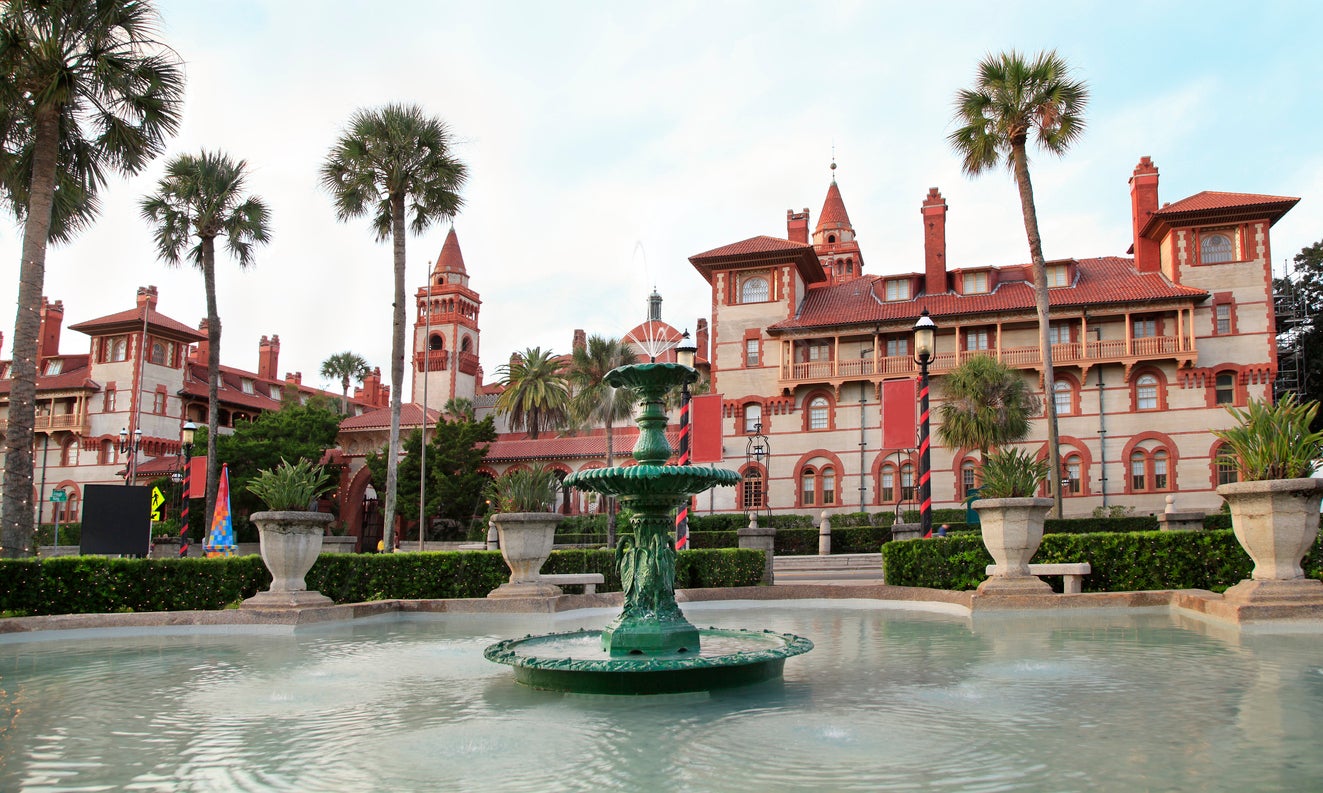
There’s plenty that’s fake in Florida — but St. Augustine is the real deal.
Founded by the Spanish in 1565, it’s the oldest continuously occupied European settlement in the United States.
And it retains an intoxicating flavour of its roots, with centuries-old architecture appearing at every turn.
It’s one big monument to longevity — a land of earth tones and red-tile roofs, wrought-iron balconies and olde-worlde shutters.
Top landmarks to tick off include the Castillo de San Marcos, an iconic star-shaped fortress built by the Spanish between 1672 and 1695; the Gates of St. Augustine, which mark the entrance to the old city walls; and the cobbled streets of St. George Street. Walking here feels like stepping into a 17th-century Spanish town.
Where to stay
Casa Monica Resort & Spa, Autograph Collection is located in the historic quarter and features Moorish-style architecture that dates back to 1888.
Read more: 10 of the best under-the-radar beaches in the US for crowd-free coastal escapes
5. Leavenworth, Washington state — looks like Bavaria, Germany
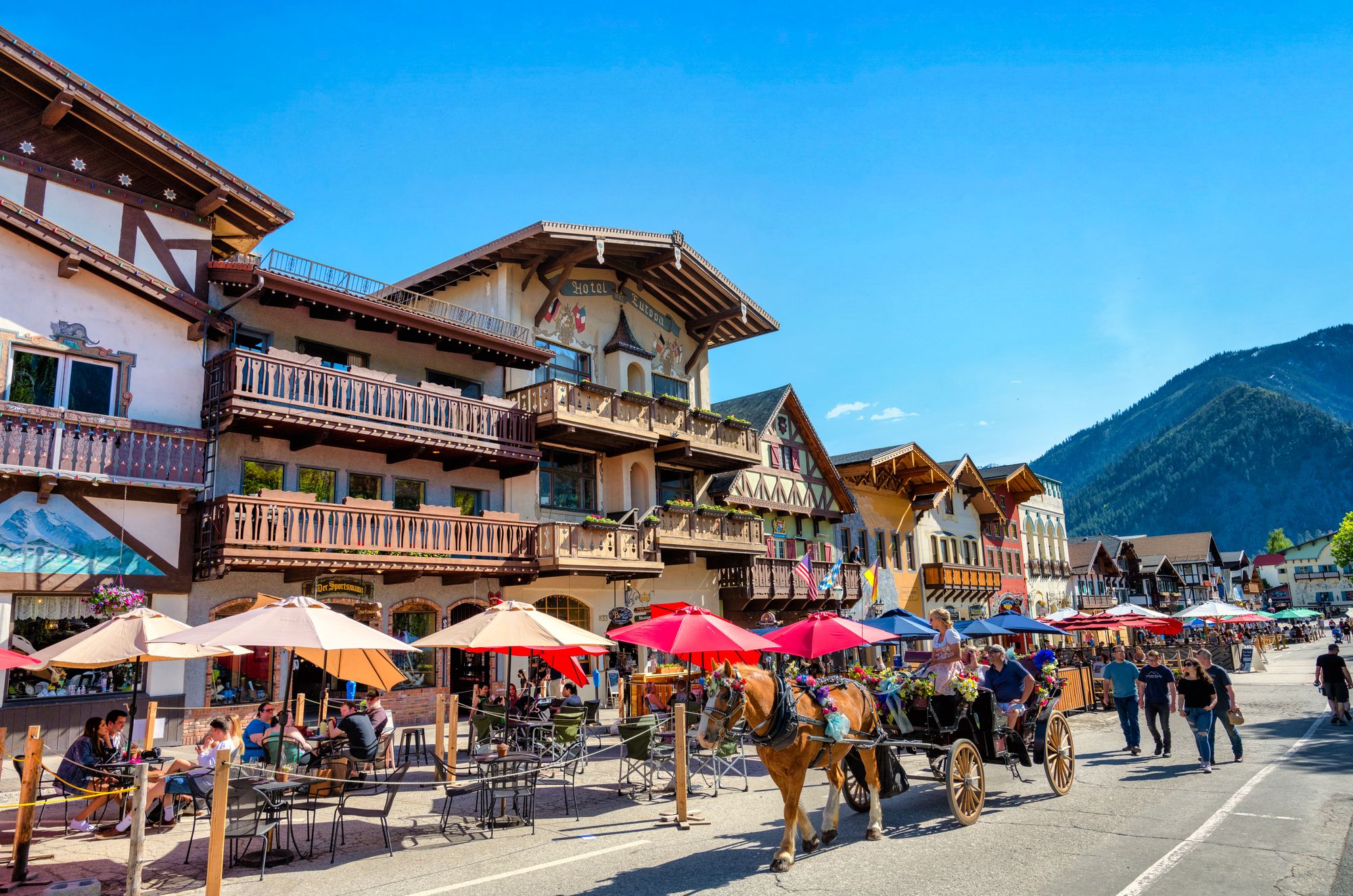
From a ghost town to a fairytale destination with around a million visitors per year, the transformation of Leavenworth is straight out of a Hollywood movie.
Today, it appears to be a postcard-perfect village lifted from the Bavarian Alps, but just a few decades ago, it was desolate and on the brink of extinction.
Leavenworth’s captivating story begins in the late 19th century, when the arrival of a rail line helped it thrive as a logging hub.
But when the railroad was rerouted in 1925, the local timber industry collapsed, and Leavenworth fell into a state of economic depression.
In the early 1960s, the town’s leaders had a eureka moment — reinvent the city as a Bavarian village lookalike to attract visitors.
After all, they reasoned, they already had the perfect backdrop, with the surrounding Cascade Mountains bearing a striking resemblance to the Bavarian Alps. So “Project Alpine” was launched, and the town has never looked back.
All buildings — even chain establishments like McDonald’s — had to adhere to strict architectural codes to ensure the theme was consistent, and Bavarian-style events were introduced, such as Oktoberfest (a German beer, food and music festival) and the Village of Lights, which sees the town sparkle with half a million lights at Christmas.
Other highlights include a Nutcracker Museum, housing over 9,600 nutcrackers from around the world, and eateries that serve German favorites such as schnitzel, bratwurst, and soft pretzels.
Where to stay
Hotel Pension Anna, steps from the center of Leavenworth, is Alpine through and through, with a German chalet-style design and a daily Bavarian-themed breakfast.
6. Helen, Georgia — looks like Bavaria
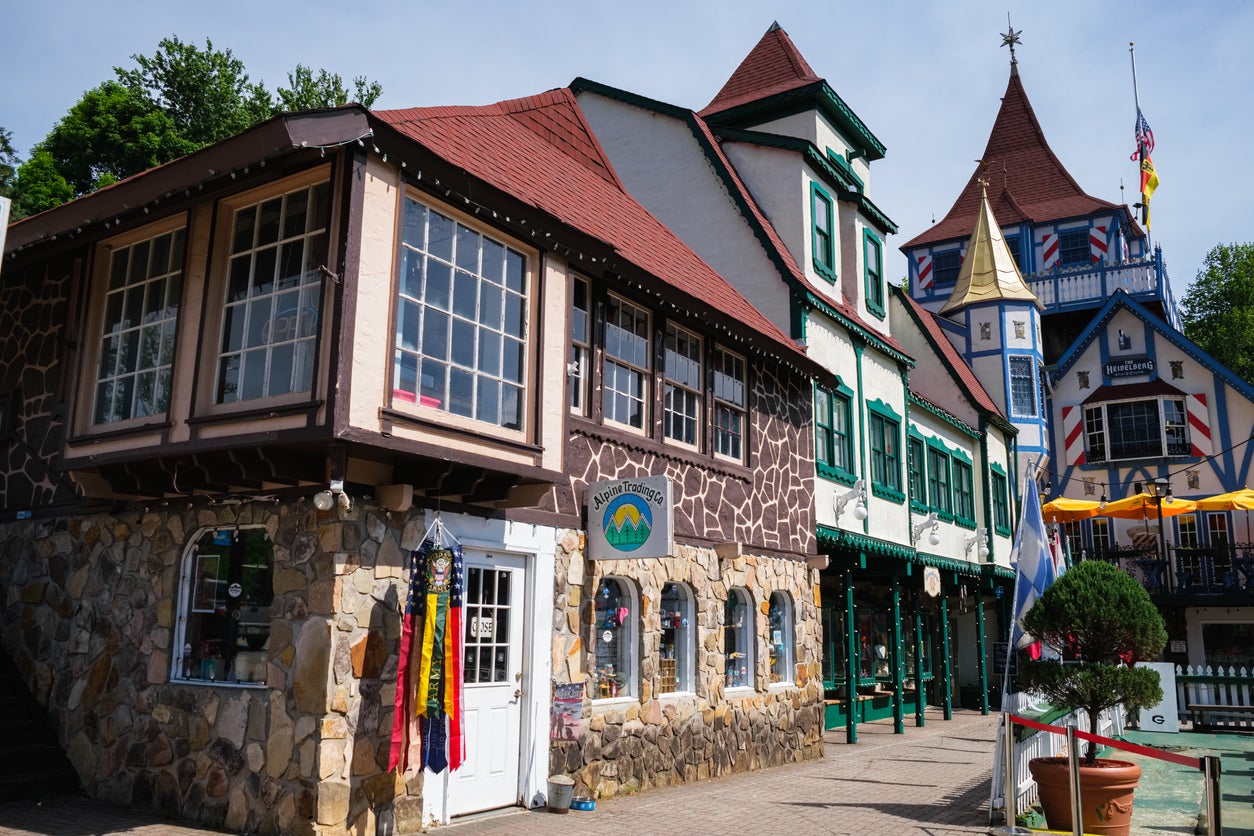
With its gingerbread-style buildings, it’s no wonder that the town of Helen has been dubbed Georgia’s “Little Bavaria”.
As with Leavenworth, its storybook looks were born from economic desperation.
It began life as a logging town but had fallen into decline by the 1960s, with a population of around 600 people living among drab concrete buildings.
Local artist John Kollock, inspired by the landscapes he saw in Germany during his Military service, conceived the idea in 1968 to transform the town into a Bavarian Alpine village.
He suggested that the buildings be given half-timbered facades, cobblestones laid into the alleyways, and walls painted with Bavarian scenes, noting that the town’s location in the Chattahoochee National Forest would enhance the Alpine illusion.
Local business owners embraced the vision and even required Bavarian architecture for new and existing buildings.
The plan worked like a charm.
Today, tourists flock to this Alpine doppelgänger, which is home to German-themed shops and restaurants and hosts one of the longest-running Oktoberfest celebrations in the United States.
Where to stay
Heidi Motel has a distinct German theme — and is even topped by a windmill.
Read more: Six of America’s spookiest hotels for a hauntingly good Halloween stay
7. Frankenmuth, Michigan — looks like Bavaria
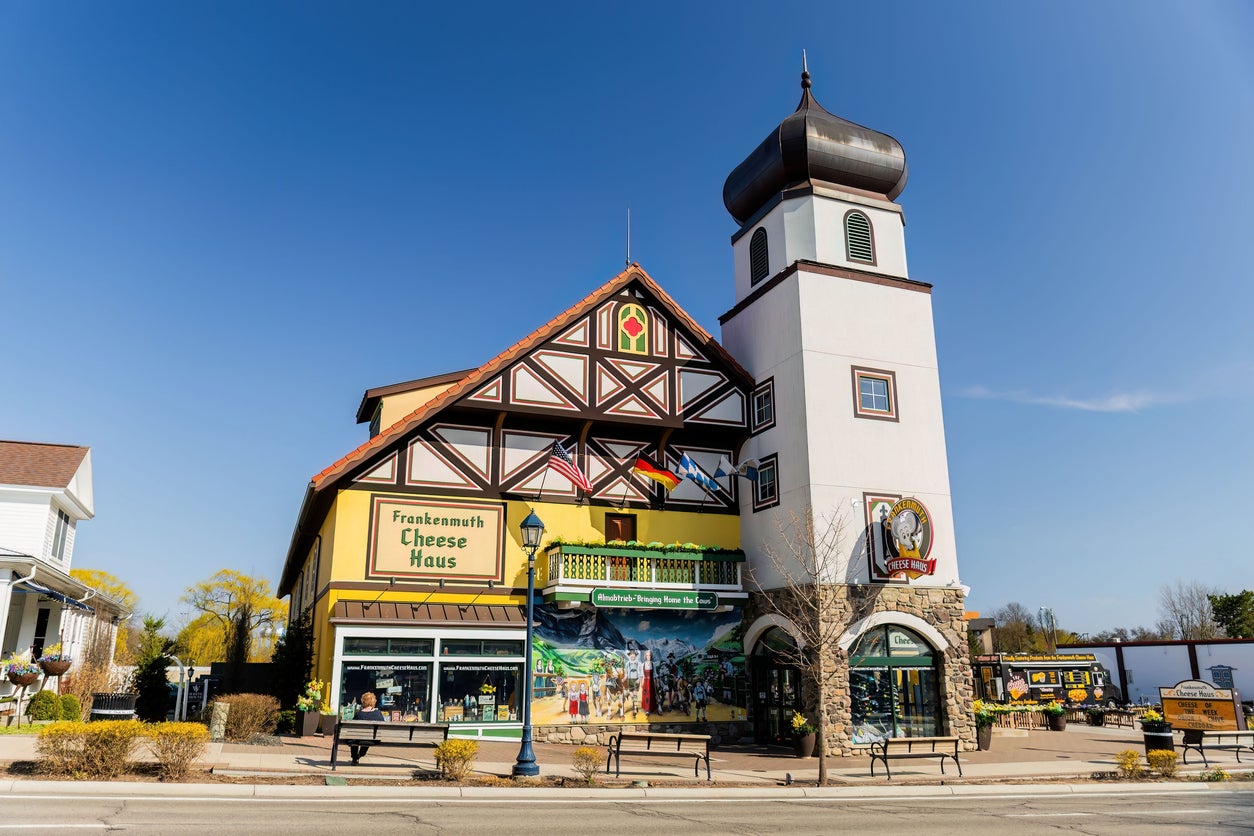
Willkommen (“welcome”) to Frankenmuth, a slice of Bavaria nestled deep within Michigan, characterized by German Alpine architecture.
But it didn’t always look this way, despite its Germanic DNA.
It was founded by 15 German immigrants from Bavaria in 1845. For more than a century, German was the primary language, while farms, mills, and breweries were the mainstays of the economy.
But by the 1950s, the town was struggling with an economic downturn.
The solution for Tiny Zehnder — owner of the local Fischer’s Hotel — was to reinvent the settlement as a quaint Bavarian village to lure visitors.
And he led by example.
In 1959, he transformed his property into an Alpine-style inn, adding stucco, half-timbering, and wood carvings, and renaming it the Bavarian Inn Lodge.
To complete the theme, staff donned traditional Bavarian costumes.
Tiny’s renovation sparked a revolution, with other local businesses quickly adopting a Bavarian architectural style.
Where to stay
The Bavarian Inn Lodge remains the quintessential Frankenmuth hotel experience.
Read more: Forget Paris: Five overlooked French cities you can reach by high-speed train (from just $13)



0 Comments